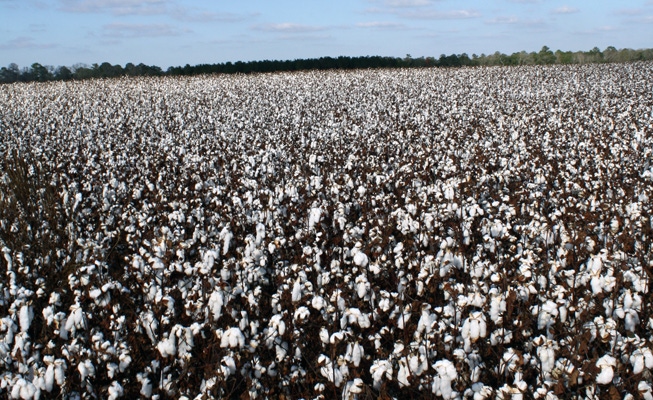
Look for stability when choosing a cotton variety
How often and frequent a variety performs at or near the top is really the best predictor for how that variety is going to perform across planting dates, depending on the way it is managed, soil types and rainfall.North Carolina is launching an on-farm variety testing program in cotton this year.

“Every variety can win a trial and every variety can lose a trial, but how often and frequent a variety performs at or near the top is really the best predictor for how that variety is going to perform across planting dates, depending on the way you manage it, your soil types and rainfall,” says Guy Collins, North Carolina’s new cotton specialist.
Collins is the new Extension associate professor for cotton at North Carolina State University. He returned to North Carolina after serving five years as the University of Georgia’s cotton agronomist. The new position is the result of a cooperative effort between the North Carolina Cotton Growers Association, North Carolina Department of Agriculture and NC State.
Collins is from Northampton County and was born and raised on a farm producing primarily cotton and peanuts. “During my high school years, I did work with the local ag consultant and that’s where my passion for cotton began. In 1999, I was accepted into NC State; I got all of my degrees there,” Collins said.

Guy Collins, left, is the new cotton specialist in North Carolina. Joining Collins is Keith Edmisten, the state’s senior cotton specialist. The two were one hand for the Blackland Cotton Production meeting in Belhaven Feb. 13.
One of the major responsibilities of the new position is to implement a robust, on-farm cotton variety testing program, according to Collins. The program begins this year and Collins asks cotton producers who wish to participate to sign up by March.
“Varieties are released very quickly these days and we need to learn as much as we can as quickly as we can,” Collins said. “In our on-farm trials, we are asking seed companies to come forth with most widely developed, best fitting varieties. We’ll be choosing from the best of each brand. We want at least 15 trials across the state. They will be replicated to make them statistically valid.”
Collins said the on-farm trials are going to be managed by growers, “so this is as real world as you can get.” The trials will be across North Carolina, under various growing environments. If a farmer agrees to participate in the trial, he will be provided the seed, a $3,000 to $6,000 value, according to Collins.
In his comments at the Blackland meeting, Collins shared results of on-farm trials in Georgia that pinpointed the costs per acre associated with improper variety selection. The cost of a large error in variety selection is an average of $150 per acre, according to Collins’ Georgia research. The cost of a small error in variety selection is $50 per acre, but Collins notes that number is usually much higher, anywhere from $70 to $120 per acre, but the $50 figure is based on 65 cent cotton.
Collins said it is critical for cotton farmers to target the right variety for their farm and growing environment. He stressed that the primary yield limiting factor is still water “and a half inch of rain can make a world of difference.”
“When you’re going around making field-by-field assessments, gauging the performance of different varieties, I think it’s really important to keep in mind that any variety can perform poorly and any variety can perform well,” Collins explained. “All the varieties we have these days are good varieties, but how they are going to compare with other varieties in the exact same situation is something we’re going to have to focus on.”
In the meantime, North Carolina’s senior cotton specialist, Keith Edmisten, stressed the importance of planting 30,000 plants per acre to achieve top yields. He explained that planting 30,000 plants per acre on 38 inch row is about two plants per foot per row, which will allow growers to maximize yields.
“I do feel fairly comfortable with 30,000 plants per acre as long as the 30,000 plants per acre aren’t in one corner of the field but spread out across the field,” Edmisten said.
Planting 30,000 plants per acre allows the cotton to form more vegetative branches, which can mean a 25 percent to 40 percent increase in yields, according to Edmisten.
About the Author(s)
You May Also Like





